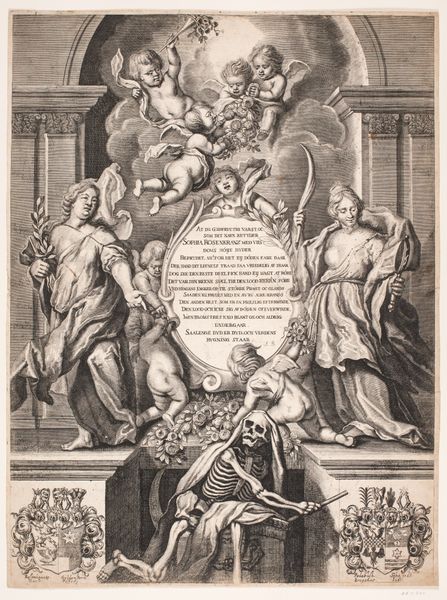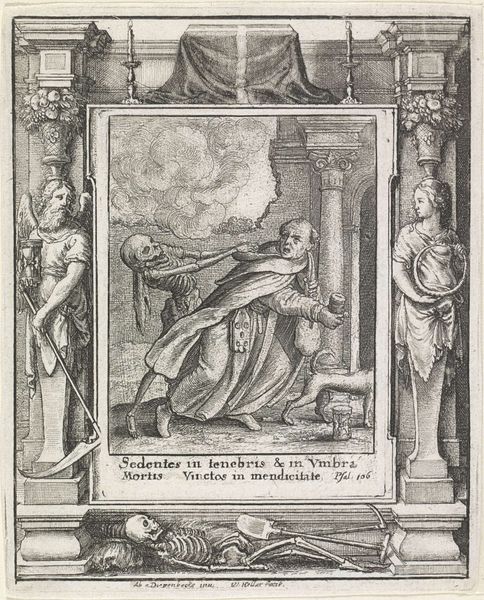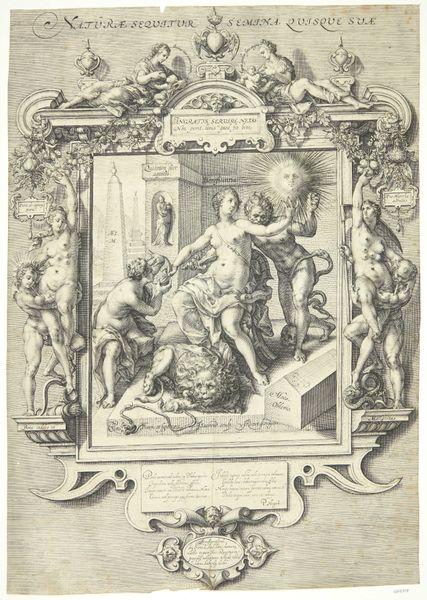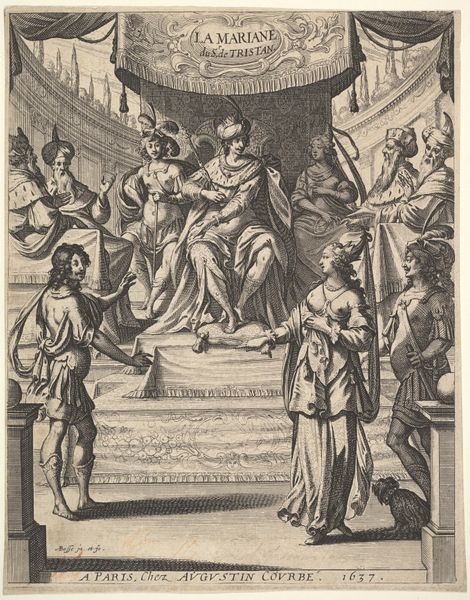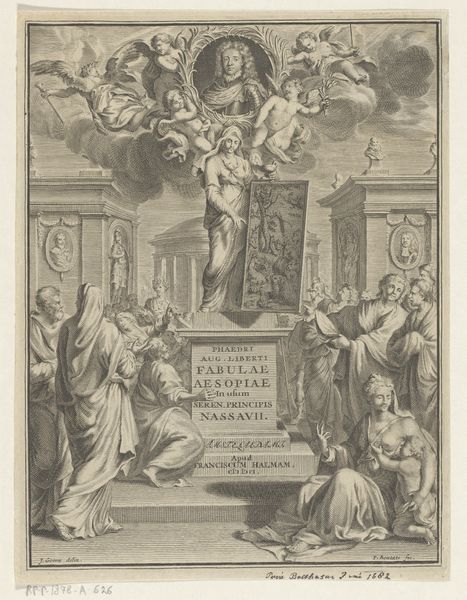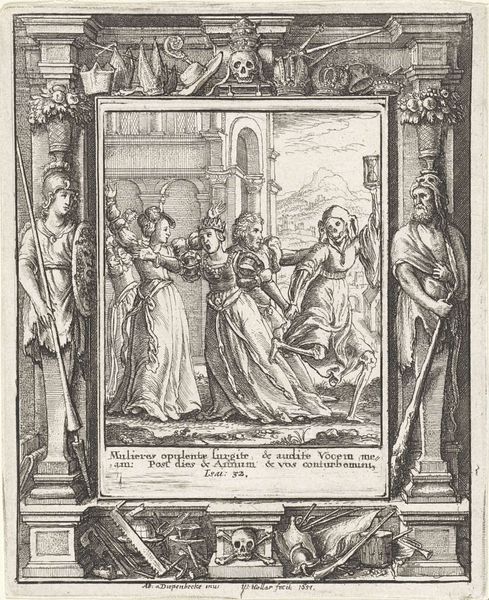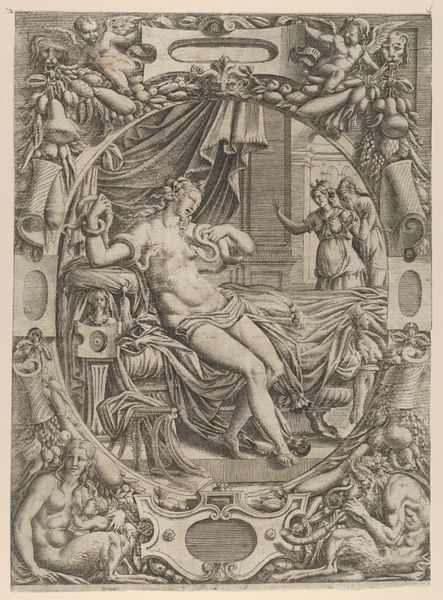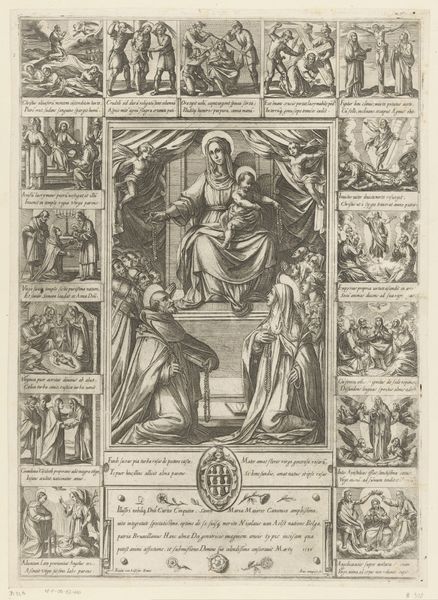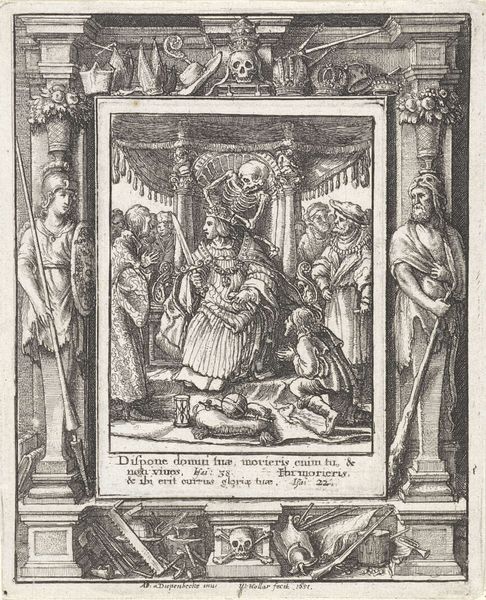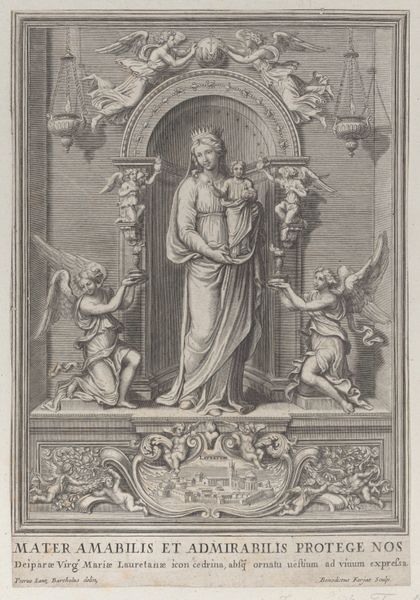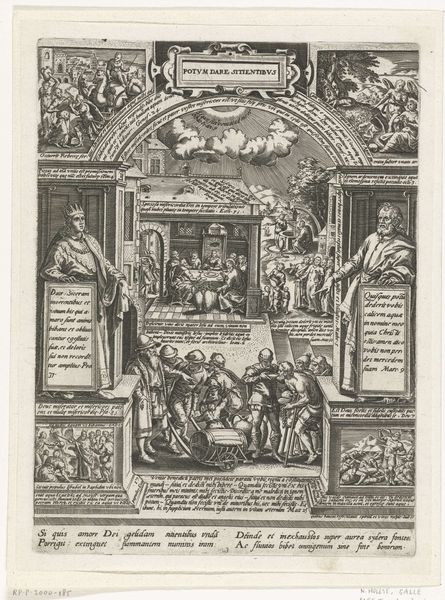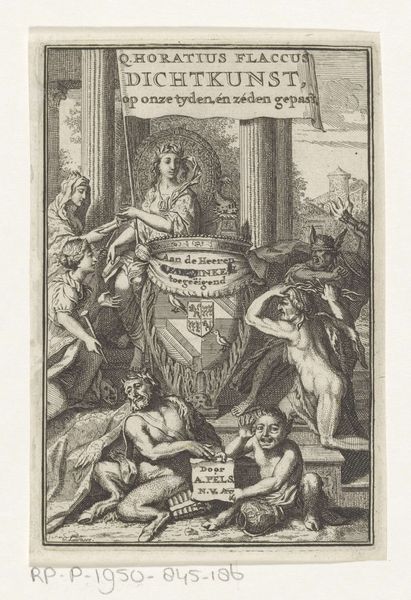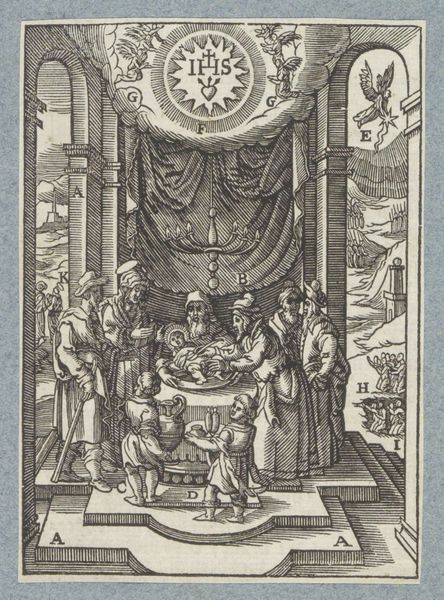
The New Metamorphosis: Frontispiece, Vol.1 1723 - 1724
0:00
0:00
drawing, print
#
drawing
#
toned paper
#
pen drawing
#
animal
#
mechanical pen drawing
# print
#
pen sketch
#
pencil sketch
#
human-figures
#
old engraving style
#
personal sketchbook
#
pen-ink sketch
#
human
#
pen work
#
sketchbook drawing
Dimensions: sheet: 5 9/16 x 3 1/16 in. (14.1 x 7.7 cm)
Copyright: Public Domain
Curator: Allow me to introduce "The New Metamorphosis: Frontispiece, Vol.1", created around 1723-1724 by William Hogarth. It's a pen drawing that's brimming with intricate detail. Editor: My initial reaction is one of satirical unease. The tightly packed composition, filled with grotesque figures, creates a distinctly unsettling atmosphere. Curator: Indeed. Observe the stark contrasts and densely hatched lines – Hogarth masterfully manipulates the pen to generate texture and shadow, guiding the viewer’s eye to specific points of visual interest, such as the central grouping of figures before the church. Editor: Absolutely, that church, overshadowed as it is, seems central to the commentary. The juxtaposition of sacred space with these figures…are those satyrs flanking the central scene? The artist deploys very specific symbolism here. Curator: Yes. Iconographically, those satyrs borrow heavily from classical depictions of base instincts and chaos. It would suggest a subversion of societal norms or perhaps a critique of unchecked passion. Editor: Precisely! The woman enthroned above the church, draped so lavishly... she sits upon or profits, perhaps, from a tottering sacred institution, while Folly and Luxury look on, impassive. And that church, crowned by what seems a preposterous and flimsy doll house of faith... it hardly seems fortified. Curator: Note the carefully rendered drapery folds, each line contributing to the illusion of depth and volume. This technical prowess lends weight and gravity to what might otherwise seem like a simple sketch. It's more than mere depiction; it is a form of persuasive argument through the vocabulary of form itself. Editor: Consider also the title “The New Metamorphosis." The idea of transformation links directly into the symbolic register: Are we seeing a culture morphing into something debased or absurd? Or perhaps is it more of an eternal return? Curator: A poignant consideration. By focusing on the artistic choices – the line quality, the compositional balance – we uncover the mechanics of meaning-making within this remarkable artwork. Editor: By acknowledging these figures as recurring cultural presences, however unsettling, the viewer is invited into a sustained and critical self-reflection. I am deeply intrigued.
Comments
No comments
Be the first to comment and join the conversation on the ultimate creative platform.
